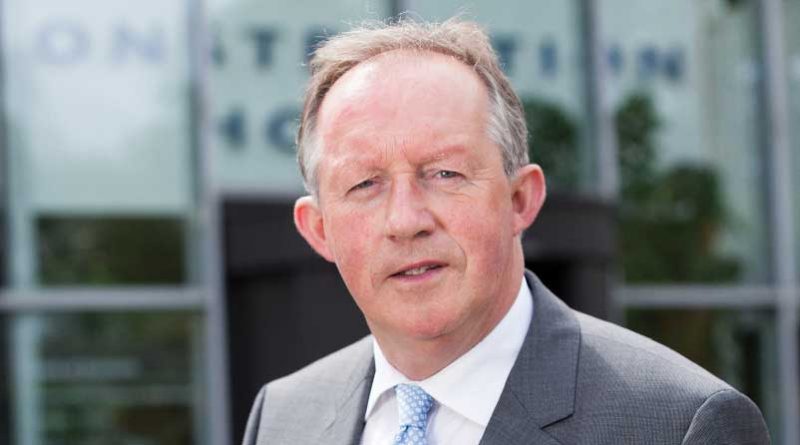National Employment and Infrastructure are key CIF concerns for the Government
With employment in the construction sector showing a rise of 7.8% in the first quarter of the year, the CIF is cautioning against the worrying trend with regard to employment in urban hubs versus the regions.
The figures, released in late May of this year show a stark contrast between unemployment figures in Dublin, standing at 6.9 percent and regional locations, with the south-east unemployment rate standing at 12.5 percent.
Director General of the Construction Industry Federation (CIF), Tom Parlon welcomed the latest jobs figures: “these impressive jobs growth figures show that our members are now seen as a destination of choice for young people seeking careers. The industry that has emerged from the recession is very different to that of the past. Careers in construction are now globally transferable and very rewarding. We are seeing huge increases in areas such as project management, trades, management and increasingly marketing. Due to a lack of activity in the house building side for the moment-particularly in the regions – that must be addressed, employment growth is occurring in civil engineering, contracting and in trades as the industry ramps up to meet the demand of Ireland’s rapidly growing economy and population.
Our industry in particular is a major contributor to Ireland’s economic growth. We are now creating jobs at the rate of approximately 1,000 per month. We want to see this continue throughout the year and call on the Government and the new Minister for Housing to support our industry via infrastructure and employment policies. We have asked the Government to review the Public Capital Programme and announce time frames for existing infrastructural projects so that our industry can gear up accordingly and hire the right people with the right skills.”
CIF is also calling for increased capital investment budget, to fund the improvement of infrastructure around the country. The Construction Information Services recently compiled a report, which analysed the top infrastructure projects the transport, water treatment and flood defences sector. Speaking about their findings, Tom Parlon said, “The CIS analysis shows how capital investment has been ravaged by the recession. These projects are essential to economic growth and job creation in the regions and nationally. In the coming months, we’re hoping to engage with Government to develop alternative sources of funding for infrastructure. We hope to set out with Government a strategy outlining how our civil engineering, contractors and house-building members can contribute to addressing Ireland’s infrastructure deficit in an ambitious programme.”
The CIF believe that transport that improvements to transport infrastructure is paramount. They say that our travel infrastructure is critically important for special planning and economic development, but suffers key weaknesses, citing the need for completion of the regional network connecting urban centres like Waterford, Cork, Limerick, Galway and Sligo as an example.
Tom Parlon says that the Government’s plan to increase housing supply to 25,000 by 2020 will not happen unless key improvements to infrastructure are put in place. “Without a concomitant increase in capital investment in infrastructure, there is a risk that these houses will not be adequately serviced by road, rail, water and broadband. We risk creating unsustainable ghost communities in the regions. Unfortunately, reallocating investment from capital projects like national roads, rail and air transport, to housing related infrastructure will only exacerbate this issue.”
The CIF says that it wants to make the case for Government to increase its investment in infrastructure. They say that Ireland is 2nd last in the EU and 23 out of 25 in OECD for infrastructure spend; currently investing only 2% of GDP. The CIF has been calling for Government to increase spend in this area to 6-8% over the next decade.
The drop off during the recession was natural, says Parlon. However, a lack of investment has caused significant problems. “In 2010-2013, capital expenditure averaged only 4.8pc of the total, less than half the long term average during 1995-2008. General government spending on infrastructure averaged €3.8bn between 2013-2015, however, the annual depreciation of the government capital stock amounts to about €3bn. The EU Commission recently identified significant infrastructural deficiencies in transport, water and housing arising from this ongoing decline in investment.”
Tom Parlon and the CIF believe that the infrastructure is stymieing the development of the country, both in an economic and societal way. ““Infrastructure investment is now, by omission, profoundly shaping Irish society. In everyday terms, this manifests itself in housing shortages, decrepit road networks, unsafe water infrastructure, and a lack of broadband, particularly in the regions. The regions feel this deficit most, resulting in reduced economic activity and opportunity. Young people are voting with their feet and moving to Dublin and other urban centres. Currently, Dublin generates 40pc of Irish GDP and has 25pc of the population. London generates 20pc of the UK’s GDP and this is considered unhealthy. Employment growth is outstripping that in the regions and Ireland’s economy is imbalance. We welcome the Government’s upcoming National Planning Framework consultation as this is a perfect opportunity to set out how the construction industry can facilitate Irish economic growth and shape society over the coming decades.”
This article first appeared as part of the Irish building magazine ‘Leaders in Construction’ interview series 2016. Click here to read the entire issue
The content of this site is subject to copyright laws and may not be reproduced in any form without the prior consent of the publishers. The views expressed in articles do not necessarily represent those of the publishers.
[rev_slider subscribe]

